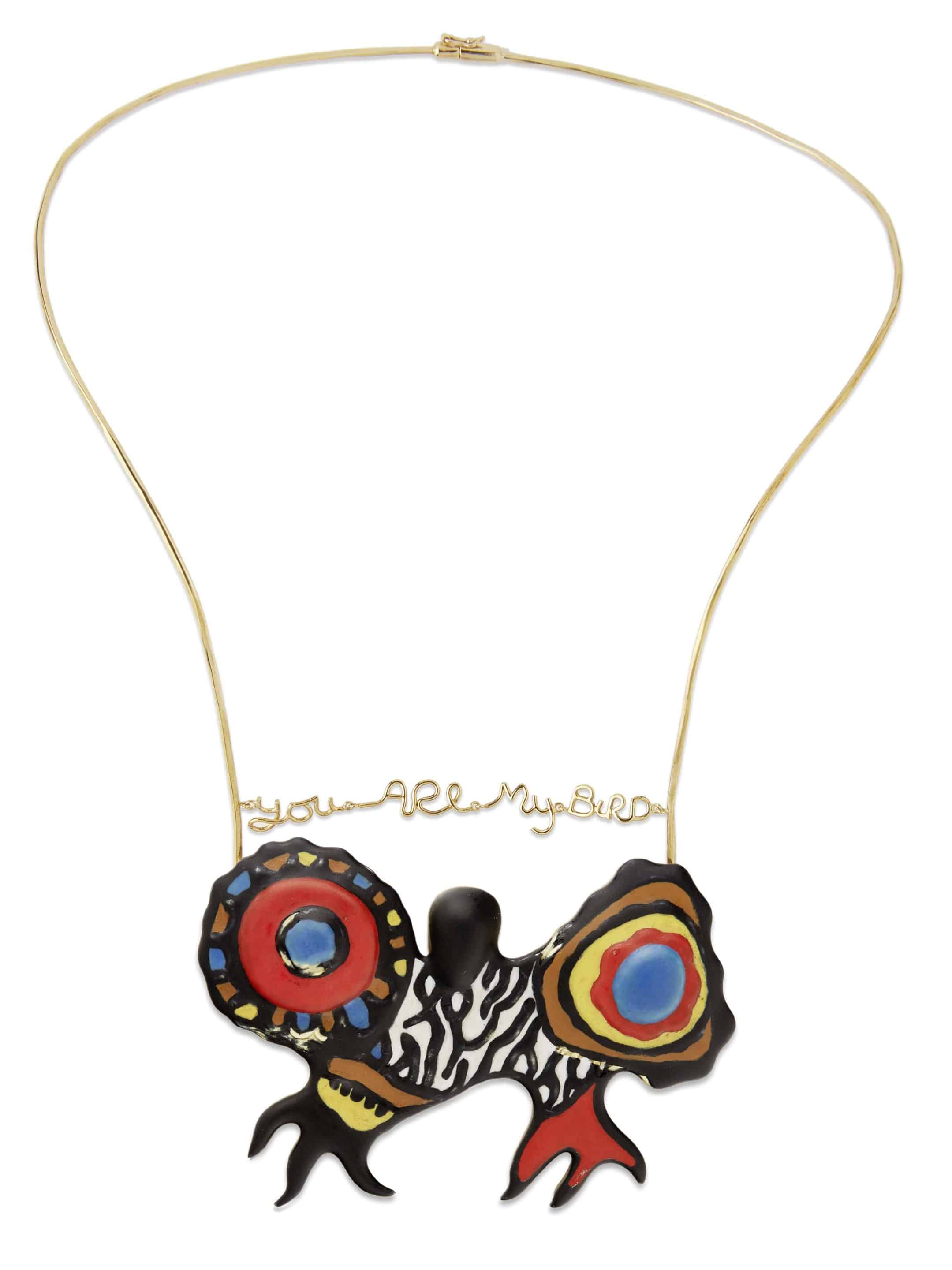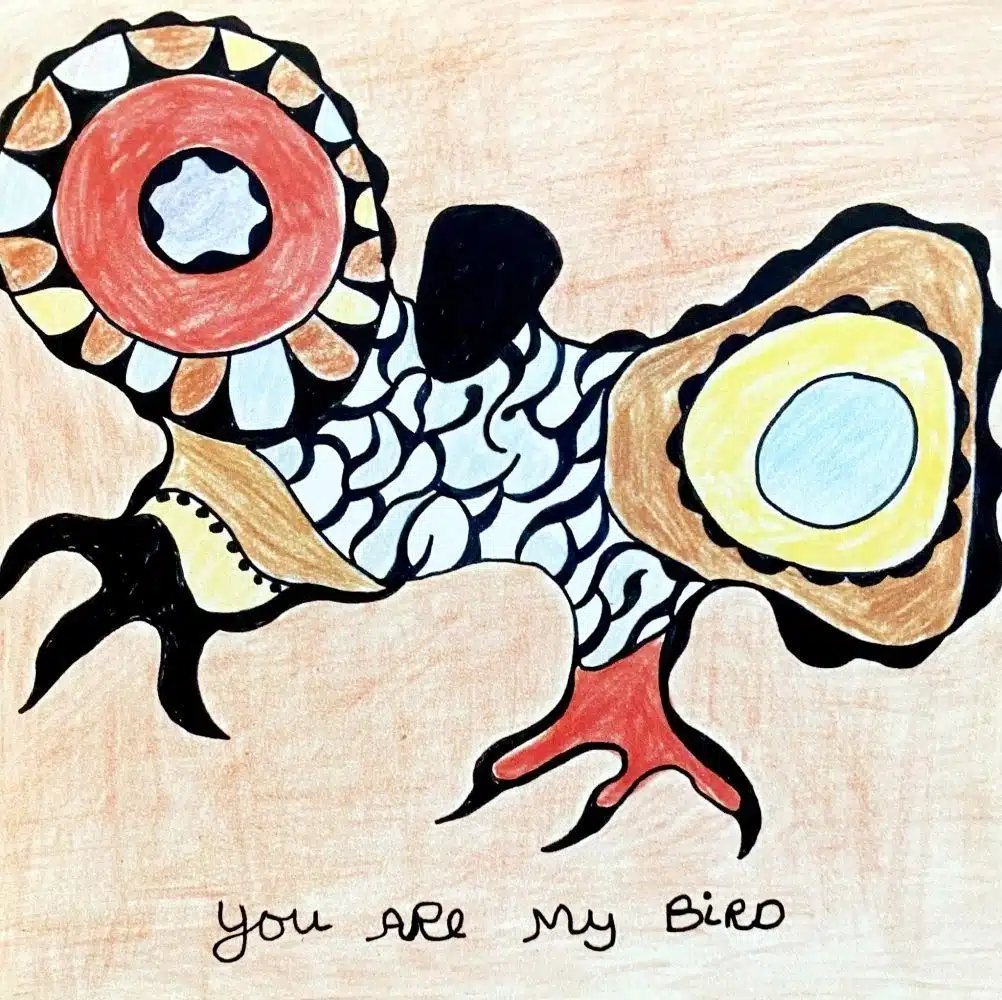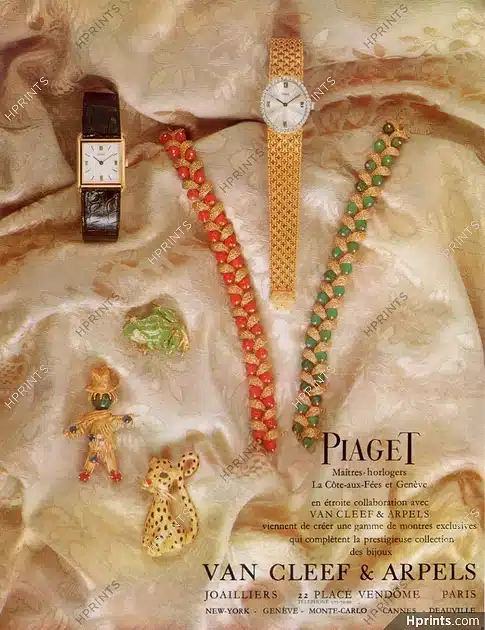Launched in 2022, Maurice Auction is a young auction house as sharp as it is dynamic and led by two talented auctioneers: Salomé Prison and Marie-Laurence Tixier. I’ve known them for several years now and followed their respective adventures in the art market.
On 30 January, the auction house will be staging a jewellery sale that will see a lot of beautiful pieces including many artists’ jewels. The catalogue, which is exciting, reveals beautiful stories, nice provenance and sought-after signatures. I really enjoyed discovering the objects, observing them from every angle and trying to uncover their secrets. So I invite you to join me in discovering the different pieces I’m offering you today, and I hope you’ll want to go and admire them, and above all, buy them!
1 – A ring by Pol Bury
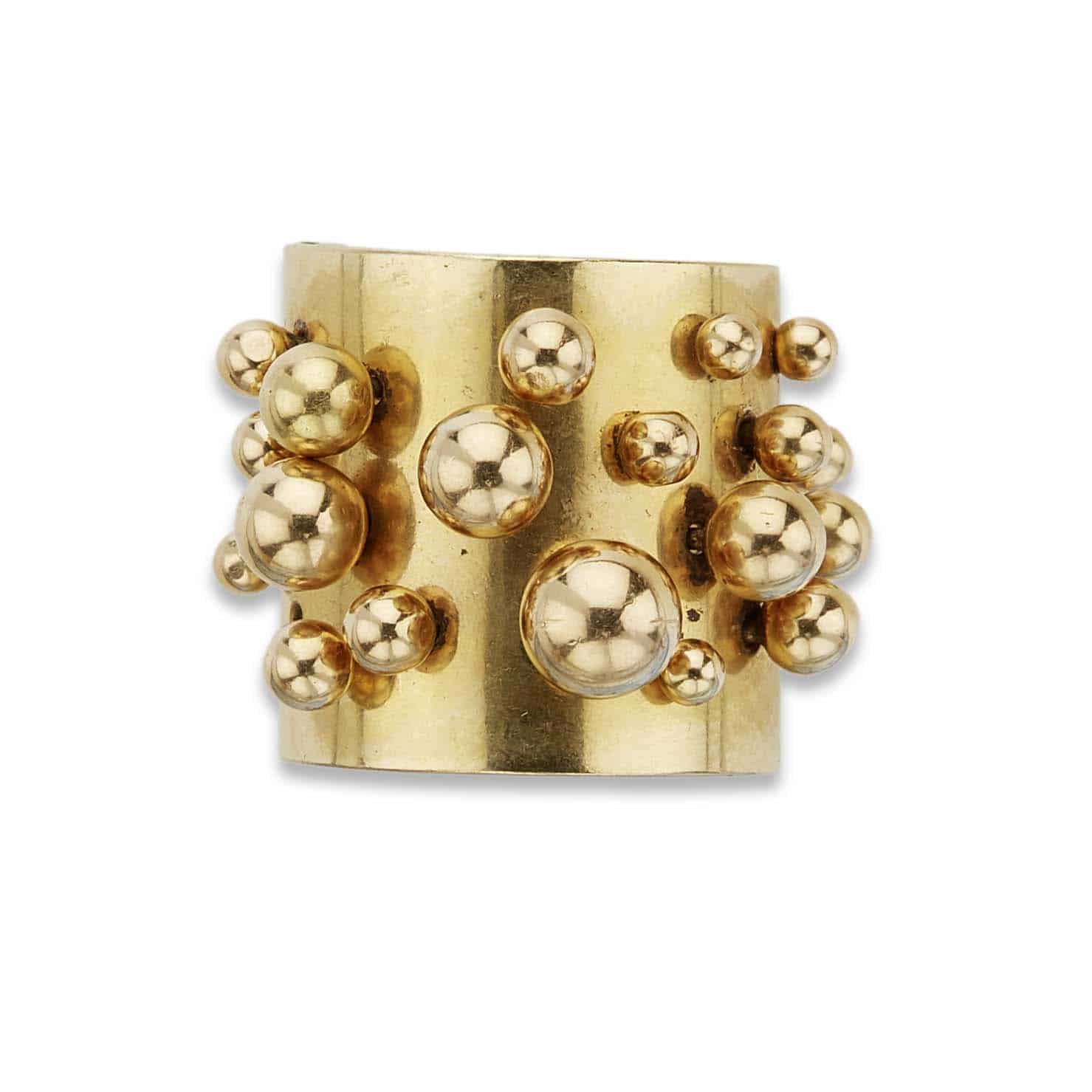
Lot 1: Pol Bury gold ring. Estimated at between €3,000 and €5,000. Photo: Maurice Auction
Pol Bury is all about movement. He is one of my favourite contemporary jewellery artists. The painter and sculptor also became interested in jewellery in the 60s and 70s. A key player in kinetic jewellery and a member of the Op Art movement, the man who was also close to the Surrealists gradually abandoned painting to reflect on movement and how to transcribe it as poetically as possible.
Balls and magnets became signature elements in his pieces. Although he worked with the Italian workshop GEM, he also called on the services of a Parisian jeweller, Jacques Bugin, who produced a large proportion of his gold and silver pieces for the Galerie Maeght until 1984 (when the workshop closed). Like this gold ring, so joyful and playful, it deserves your full attention.
2 – The “You are my bird” necklace by Niky de Saint-Phalle
Lot 7: “You are my bird” gold and enamel necklace. Estimated at between €7,000 and €10,000. Photo: Maurice Auction. Lithograph produced in 1971, which inspired the necklace. Photo: Drouot
Who hasn’t stopped in awe just a few metres from the Centre Pompidou to admire the Stravinsky Fountain designed by artist Niky de Saint-Phalle? A visual artist, painter, engraver, sculptor and film-maker, she has left an indelible mark on the history of art. A jack-of-all-trades, she became interested in jewellery in the 1970s when she began designing it and having it produced by Giancarlo Montebello’s workshop.
Montebello, who lives and works in Milan, founded the GEM studio in 1967 with Teresa Pomodoro, dedicated to the production of artists’ jewellery. While Niky de Saint-Phalle’s jewellery is relatively commonplace, certain models are much rarer. One example is the brooch/necklace “You are my bird”, presented at the end of January, for which there is a lithograph made in 1971. Birds held a special place in the artist’s heart, as she saw them as messengers between the visible and invisible worlds.
3 – The “Mistletoe” set by Van Cleef & Arpels (lots 27 and 28)
Lot 27 & 28: Gold and lapis lazuli “Mistletoe” set by Van Cleef & Arpels. Made by the Camille Bournadet workshop. Photo: Maurice Auction. Advertising for Piaget and Van Cleef & Arpels timepieces, 1967. Photo: Hprints
I like the idea of going further and further in identifying a piece of jewellery. After reading the signature, I always find it exhilarating to identify the maker and bring it to light. The ‘Mistletoe’ set is an iconic model from Van Cleef & Arpels. Hammered gold and coral have been common examples of this model since the 1960s. There is also a gold and diamond version. And, more rarely, it’s the lapis lazuli version that we’re lucky enough to come across.
Although Mistletoe jewellery is always signed Van Cleef & Arpels, it is interesting to look at the workshop that made it. In most cases, the initials CB are legible. CB stands for M. Camille Bournadet, a workshop that has worked for VCA, of course, but also for Cartier and Lacloche. The man who founded his workshop in 1931 (registered in March 1932) worked until 1972 when his grand-nephew took over: Mr Roger Mathon, who went on to found the Maison Mathon, which still excels today in high-end jewellery.
4 – A Restoration set
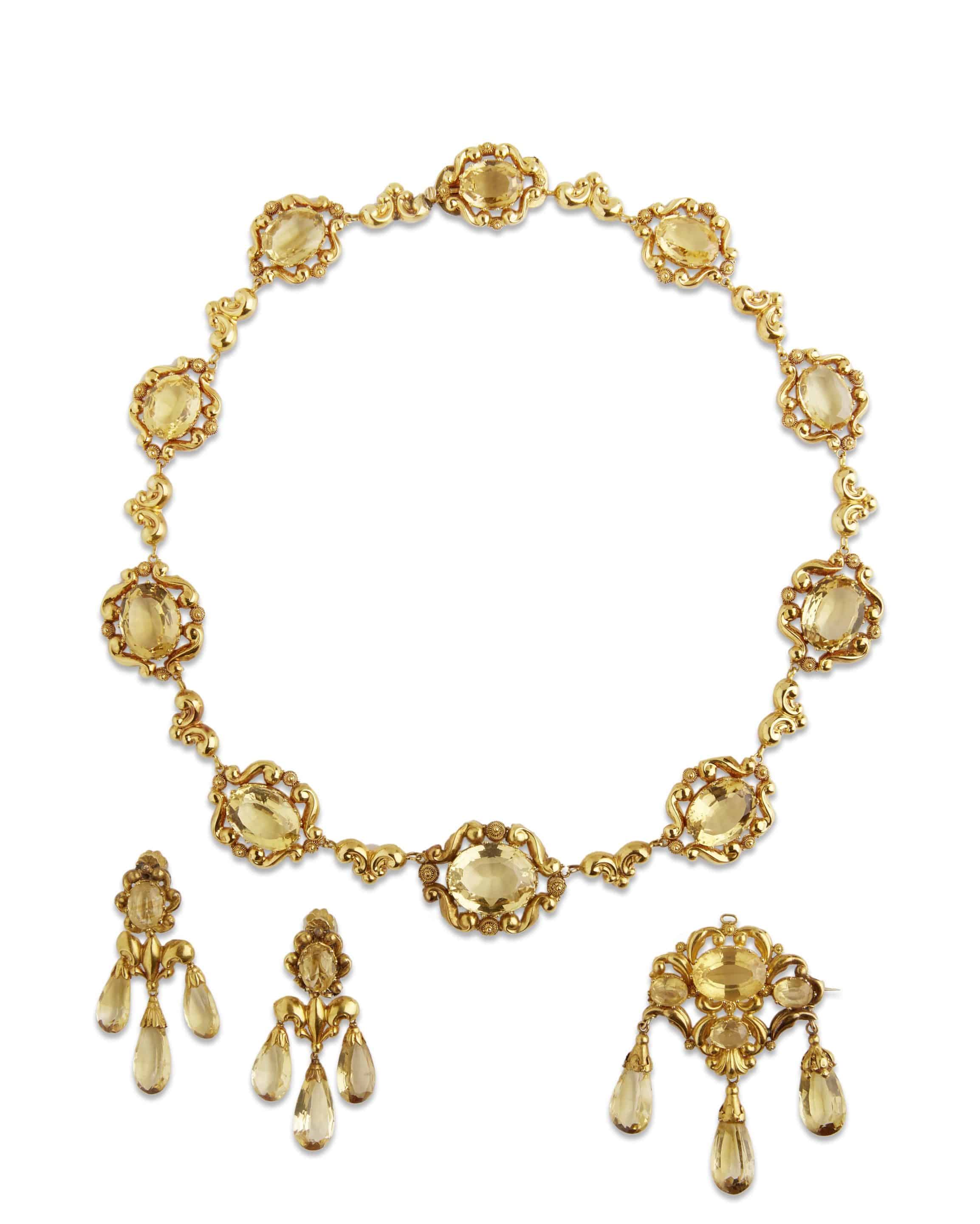
Lot 36: Restoration gold and citrine set. Estimated at between €2,000 and €3,000. Photo: Maurice Auction.
After the fall of the 1st Empire and against a gloomy economic backdrop – Napoleon’s campaigns had been expensive – the Comte de Provence, then the Comte d’Artois, wanted to recreate the Ancien Régime. High inflation (nearly 5%) saw the price of raw materials such as gold and gemstones rise. As a result, the jewellers of the time became inventive. Frames were lightened, less expensive but more colourful stones were used and no expense was spared on volume.
The skills of jewellers were put to good use, often with remarkable results. The jewellery was intended to be light but particularly opulent. The Charles X jewellery showcases citrines and the stamping technique, which can be seen in this set with its assertive character, revealing an era when craftsmen had to be clever and inventive.
5 – A pearl and amethyst set

Lot 38: A gold, fine pearl and amethyst Draperie set. Estimated at between €4,000 and €6,000. Photo: Maurice Auction
The Draperie necklace of the mid-19th century is the natural evolution of the so-called slavery necklace, which appeared in the mid-18th century and became popular throughout the 19th century. In its original version, the collar consisted of three plates and three chains between the plates. At the time, it was certainly the most beautiful gift a husband could give his young wife.
As fashion took hold, the model was embellished with more chains, tassels and, after 1850, numerous oval, pear-shaped or drop-shaped stones and even fine pearls. Just look at this fabulous necklace from around 1860. It should also be noted that Empress Eugenie brought all her jewellery back in the style of Marie-Antoinette and made the tassel fashionable again.
And let’s not forget that this piece came from the Imperial couple’s entourage, and the story goes that the Empress gave it to the family… But, shhh! I won’t tell you any more. But I can only encourage you to take an interest!
6 – A Belle Epoque bracelet

Lot 41: Belle Epoque platinum and diamond bracelet. Estimate between 6000 and 8000. Photo: Maurice Auction.
The delicacy of Belle Époque jewellery is not legendary, it is very real. Platinum to create this luminous white jewellery, diamonds in great numbers to add sparkle, and a lace of metal to sublimate the mille-grain settings, the signature of jewellery from this period. What’s surprising and delightful about the bracelet on display is its incredible lightness and the perfect mastery of full and empty, giving it a special character and, to my mind, a great deal of sensuality.
As with the brooch, there is nothing to identify it. Its French hallmark is illegible (with the exception of a J and possibly a crossed letter M). Note that the absence of a signature allows us to concentrate on the remarkable craftsmanship of the object, which is all to the good!
7 – A chalcedony and ruby brooch

Lot 48: A gold brooch with blue and pink chalcedony. Estimated at between €1,000 and €2,000. Photo: Maurice Auction
Some jewels keep their secrets. Sometimes (often!) we can’t find out everything about them and the life they have lived. This mid-20th century (1940s/1950s) brooch is an excellent example. It’s sublime, colourful and imposing. It looks amazing. And it comes with an equally magnificent bracelet. There are a few slight modifications. It has no signature, no hallmark, no number..
We know that the family that owned it travelled extensively in Europe and the USA. I can think of other houses that have produced pieces with a taste as assertive as that of this jewel. The style, workmanship, colours and use of these stones with the blue and pink chalcedonies remind me of Yard, whose work I adore. The scrolls of synthetic rubies remind me of the birds of paradise of Van Cleef & Arpels… She’s keeping her secrets for the moment, but who knows… one day, maybe she’ll tell us more..
8 – Two jewels signed Jean Despres (lots 56 and 57)

Lots 56 and 57: various pieces signed Jean Despres. Photo: Maurice Auction
Jean Despres was a highly talented goldsmith and certainly one of the most innovative jewellery designers of the inter-war period. A draughtsman who was close to the young cubists and surrealists, his early jewellery was inspired by mechanics and aeronautics. By renouncing gemstones and using silver and pewter, he established his signature and his now iconic creations.
As far back as January 1931, Roger Brielle (Art et décoration) had the right words to say about his talent: ” It would be unfair not to pay tribute to the perfection of Jean Despres’ silver mountings, which, harmonising without the slightest fault with the character of the designs and tones, help to give these jewels the distinction that constitutes their ideal personality Imitated but never equalled, Jean Despres is the signature of every jewellery collection.
See you soon!
